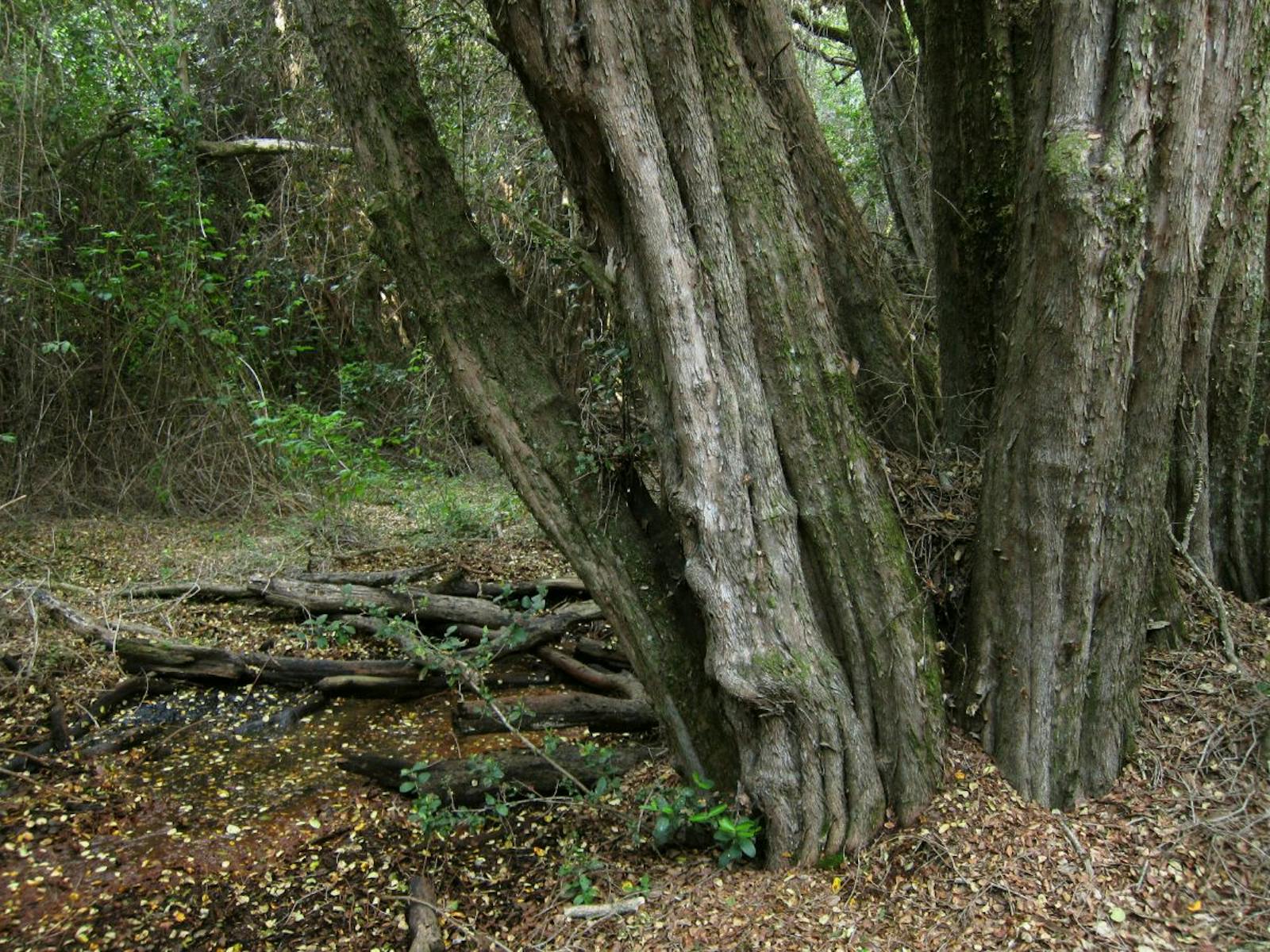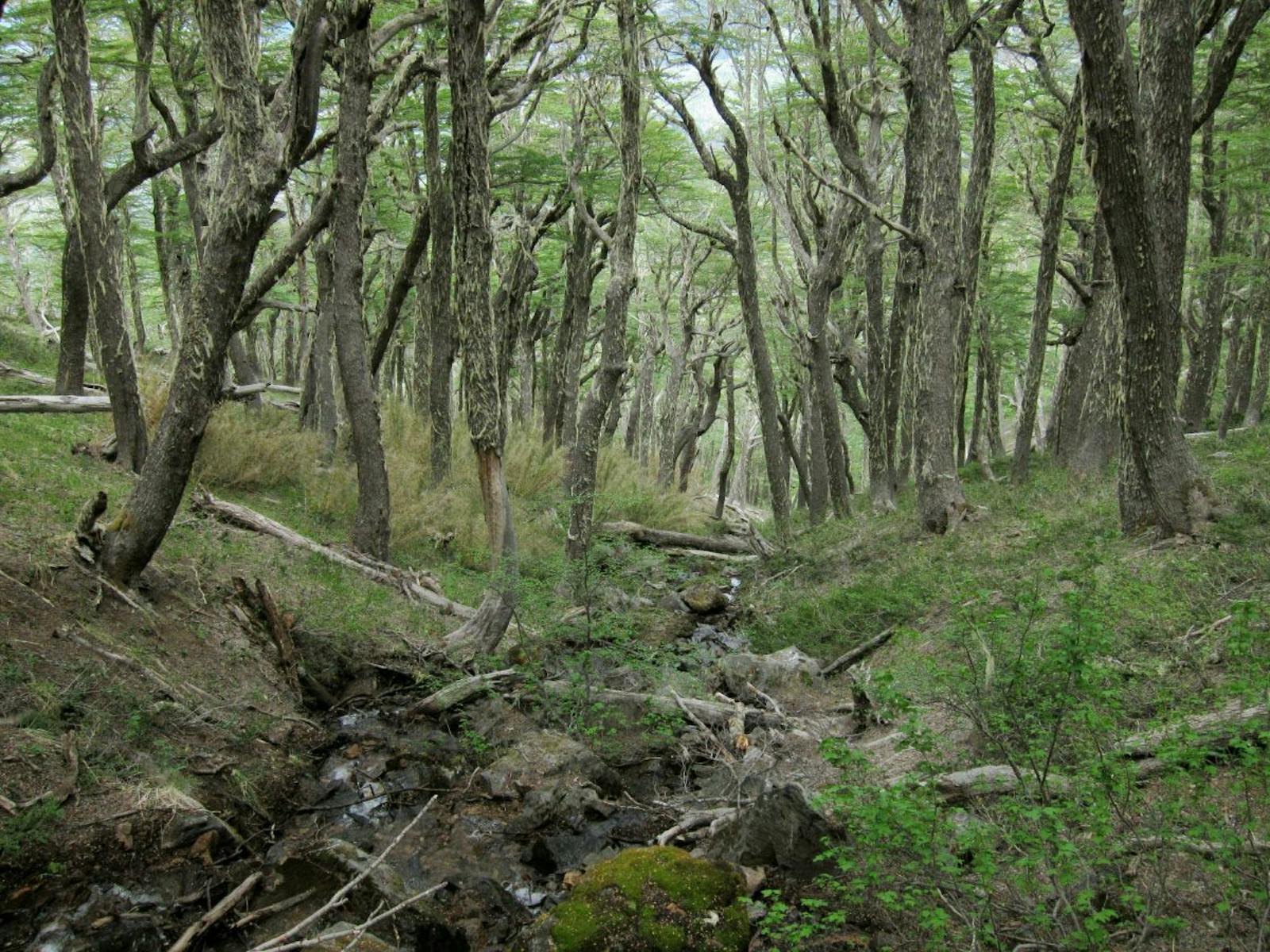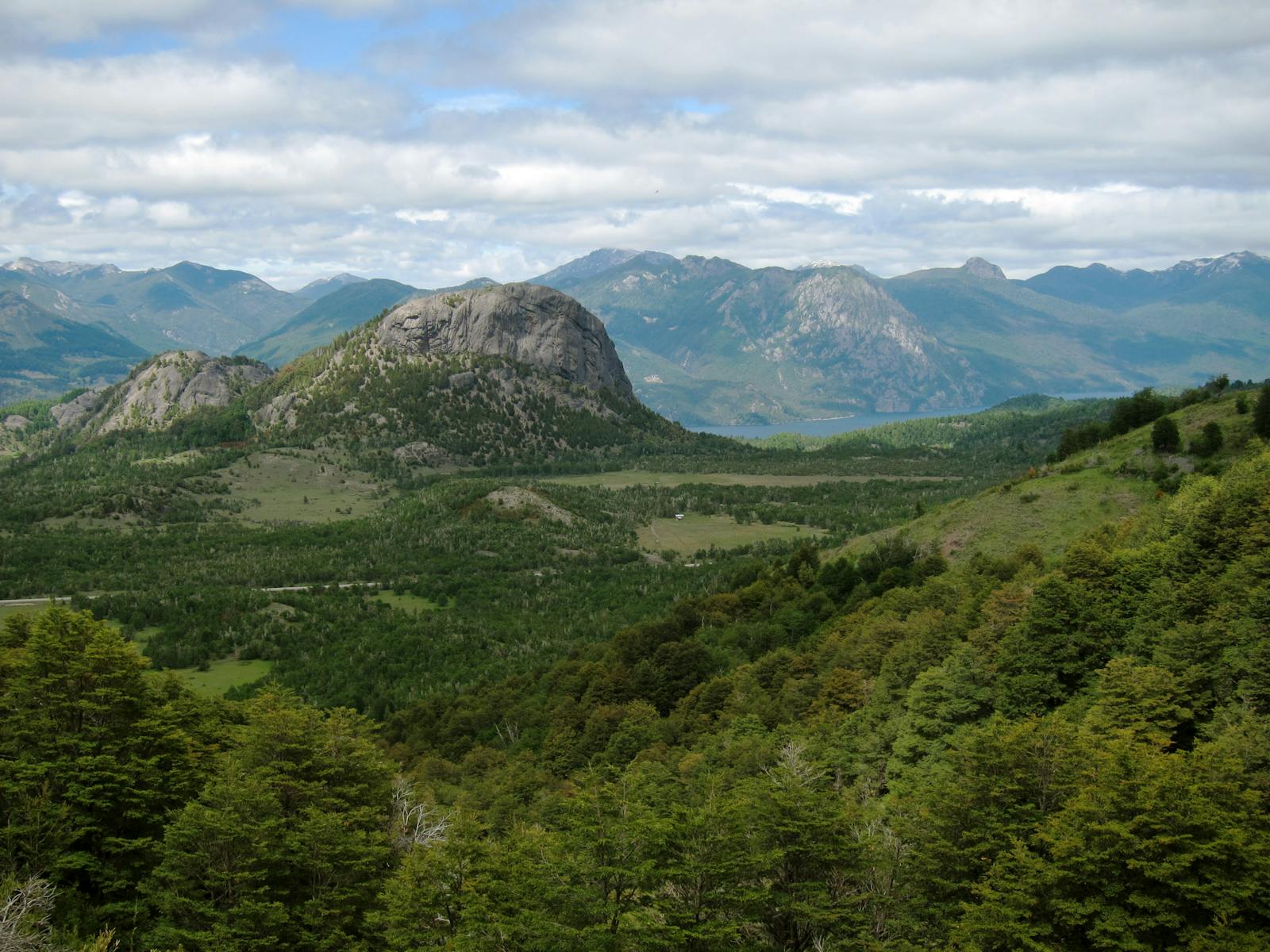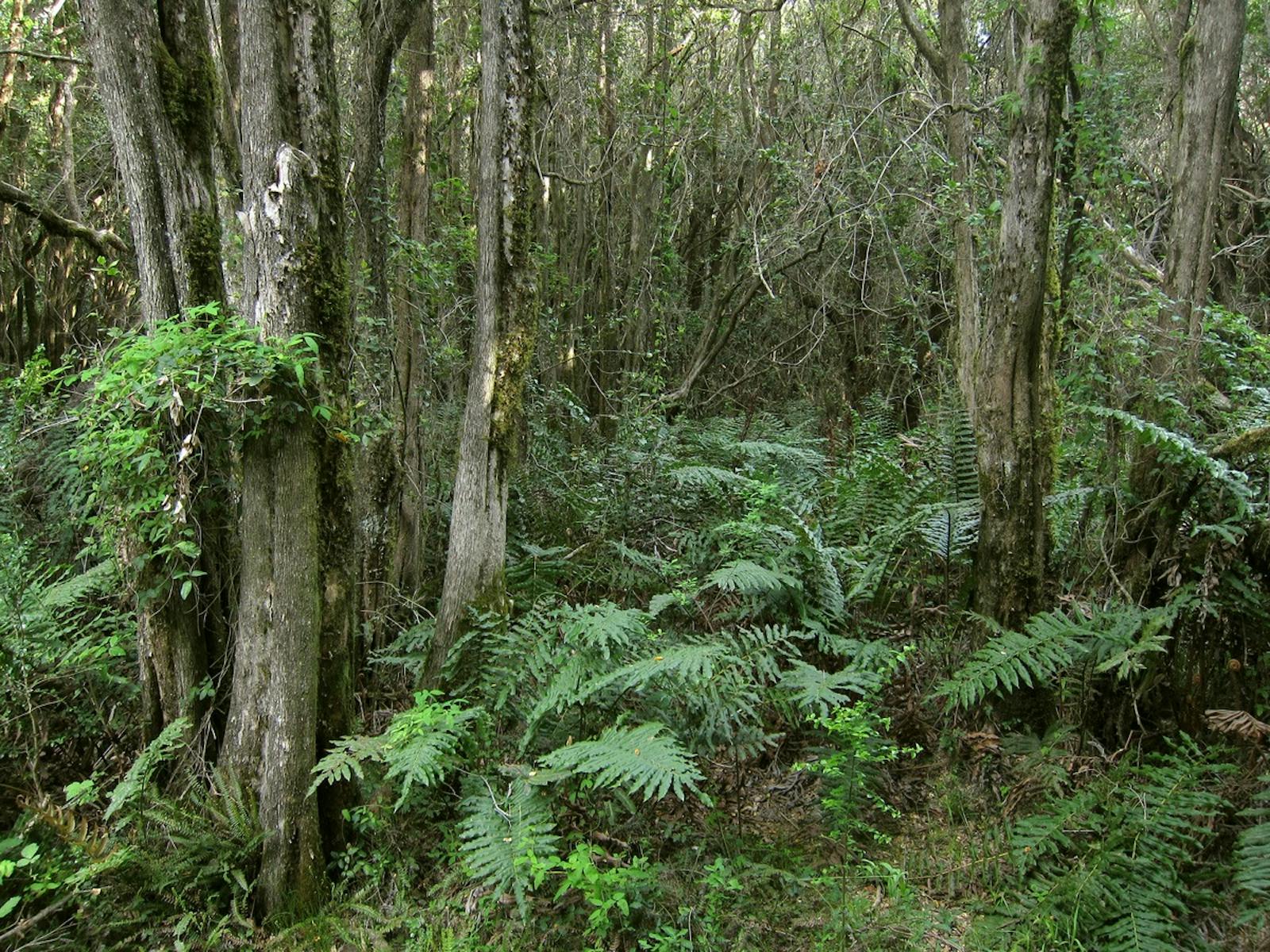Valdivian Temperate Forests
The ecoregion’s land area is provided in units of 1,000 hectares. The conservation target is the Global Safety Net (GSN1) area for the given ecoregion. The protection level indicates the percentage of the GSN goal that is currently protected on a scale of 0-10. N/A means data is not available at this time.
Bioregion: Chilean Mixed Forests (NT1)
Realm: Southern America
Ecoregion Size (1000 ha):
24,865
Ecoregion ID:
563
Conservation Target:
40%
Protection Level:
6
States: Chile, Argentina
Alerce, a unique conifer related to cypress, is the tallest tree in South America and among the longest living species. These are the dominant tree in many parts of the Valdivian forests, reaching between 60–70 m tall and are extremely important indicators intact forest ecosystems. Among the alerce forests the Kodkod, the smallest cat species in the Americas, completely dependent on old growth forests, can be found chasing small birds, lizards, and rodents. Alerce forests host an abundance of unique biodiversity, with many species like the kodkod that are found nowhere else.
.jpg)
The flagship species of the Valdivian Temperate Forests ecoregion is the alerce. Image credit: Creative Commons
The Valdivian Temperate Forests ecoregion is in the southern cone of South America. It covers a narrow continental strip between the western slope of the Andes and the Pacific Ocean. The tree line is at about 2,400 m altitude in central Chile, descending to 1,000 m in the south of the Valdivian region. The Andean mountains at these latitudes rise above 3,000 m. At these higher elevations the temperate forests disappear and are replaced by high Andean vegetation. The maximum annual average temperatures range from 13°C in the south to 21°C in the northern end of the ecoregion, while the minimum annual average temperatures range from 4–7°C.
The average annual precipitation varies between 1,000 mm in the north and more than 6,000 mm in the southern part of the ecoregion. The combination of biogeographic events, temperature and precipitation gradients, a long history of isolation, and recent great climatic changes has produced a mosaic of forest types in the ecoregion. These include:
- Deciduous forests of Maula, characterized by the Nothofagus species;
- Valdivian laurel-leaved forests dominated by a variety of tree species, including olivillo, ulmo, tiaca, and tineo;
- Northern Patagonian forests with a predominance of evergreen species such as coigue, huililahuani, and canelo;
- Patagonian Andean Forests include monkey puzzle trees and high Andean scrublands;
- Evergreen forests consisting of Magellan’s beech and bogs of Sphagnum.
An important component of the Validivian forest ecosystem, and the dominant and defining tree in much of the Valdivian temperate forest ecoregion is the endangered alerce, Fitzroya cupressoides. It is the largest tree species on the continent and can live up to over 3,600 years old. Its impressive size was not only important in the architecture of the ecosystem but also its value in timber trade. Since the late 16th century, alerce has become one of the most economically significant export in colonial Chiloé and Valdivia, and was once used as a local currency. Large scale logging of alerce continued long until the introduction of a law in 1976, although illegal extraction still occurs today.
The Valdivian Temperate Forests represent a true biogeographic island separated from climatically similar areas by extensive ocean barriers and deserts. It is characterized by its extraordinary endemism and diversity. The entire ecoregion contains 700 to 800 species of vascular plants. Endemism at the species level is estimated to be 45% for all vertebrates, 76% for amphibians, 50% for freshwater fish, 36% for reptiles, 33% for mammals, and 30% for birds. Amphibians of interest include three endangered species and the critically endangered Vanzolini’s spiny-chest frog.
Unique mammal species include the monito del monte (Dromiciops gliroides), an arboreal marsupial, the southern pudú (Pudu pudu) the world's smallest deer, and the kodkod. Endemic birds of forest understory, particularly in the family Rhynocriptidae are the most ecologically studied species in the ecoregion, over concerns of population longevity. The alerce is declared a National Monument of Chile, and a range of restoration effort has been initiated to assist the recovery of this once dominant species to landscapes where it was completely elimated.
The National Parks in the temperate forests of Chile and Argentina, but especially in the Valdivian Temperate Forests, are considered pioneer protected areas in Latin America. Some of these parks were established in the early 1900s. Nevertheless, there is a great disparity between the distribution of these protected areas and the geographic distribution of trees and vertebrate species.
The main threats to the Valdivian Temperate Forests include logging for commercial purposes and firewood. Agriculture is replacing the species-rich native forests with monocrops of exotic species. Areas are deforested for large road works such as the southern coastal highway and the bridge over the Chacao Channel. In addition, the trading of this region’s unique and endemic species continues to threaten local biodiversity. In Argentina, tourism activities and introduced species such as the European deer and freshwater fish have increasing impact on the ecosystem.
The priority conservation actions for the next decade will be to: 1) protect the most degraded habitats found in the north from further extraction and destruction; 2) preserve and restore the river and lake habitats within the ecoregion; and 3) establish logging management and sustainable forest harvest measures.
Citations
1. Smith, C. 2018. Southern South America: Chile and Argentina https://www.worldwildlife.org/ecoregions/nt0404 Accessed October 2, 2018.
2. Gajardo, R. 1994. La vegetación Natural de Chile. Proposición de un sistema de clasificación y representación de la representación de la distribución geográfica. Departamento de Silvicultura, Universidad de Chile.
3. Veblen, T.T. 1984. Degradation of native forest resources in southern Chile: In H.K. Steen (editor), History of Sustained-Yield Forestry: A Symposium. Forest History Society, Durham, North Carolina.
4. Napolitano, C., Gálvez, N., Bennett, M., Acosta-Jamett, G. & Sanderson, J. 2015. Leopardus guigna. The IUCN Red List of Threatened Species 2015:e.T15311A50657245. http://dx.doi.org/10.2305/IUCN.UK.2015-2.RLTS.T15311A50657245.en. Accessed on October 2, 2018.







